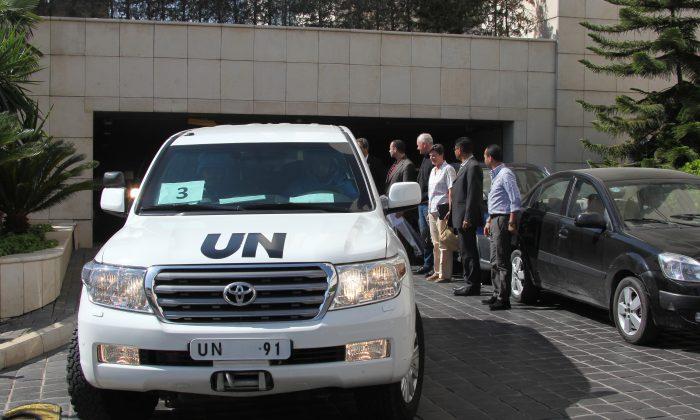A U.N. inspectors report on last month’s chemical weapons attack in Syria suggests the rockets containing the nerve agent sarin were fired from the regime’s elite military units based in mountains overlooking Damascus.
A senior U.N. diplomat said it is “abundantly clear” from the trajectory data that Syrian President Bashar Assad’s regime fired the chemical weapons. The diplomat was not authorized to discuss private U.N. discussions publicly and spoke on condition of anonymity. The diplomat said, “There isn’t a shred of evidence in the other direction.”
The diplomat’s comments come as the U.N. announced Wednesday its inspectors will return to Syria to investigate other alleged chemical weapons attacks in Syria.
Assad maintains rebels were behind the Aug. 21 chemical attacks. Russia’s Deputy Foreign Minister Sergei Ryabkov said Wednesday that the Assad regime has new evidence the rebels were responsible.
Syria handed the evidence over to Russia. Russia will review it in the coming days. Referring to the U.N. report, Ryabkov told Russian media: “We are unhappy about this report. We think that the report was distorted; it was one-sided. The basis of information upon which it was built is insufficient.”
Human Rights Watch (HRW) analyzed the report, using its trajectory data to pinpoint the location from which the rockets were fired. [ http://www.hrw.org/news/2013/09/17/dispatches-mapping-sarin-flight-path ]
Article Continues after the discussion. Vote and comment
[tok id=eb824d8cf7f00aec4cedde7baea38ed7 partner=1966]HRW explained in an article published Tuesday that Appendix 5 of the report provides precise angular measurements related to the trajectory of the rockets. The U.N. examined field debris and concluded in its report that some impact sites “provide sufficient evidence to determine, with a sufficient degree of accuracy, the likely trajectory of the projectiles.” [ http://www.un.org/disarmament/content/slideshow/Secretary_General_Report_of_CW_Investigation.pdf ]
The report gives specific measurements of the rocket bearings. HRW connected the dots and traced rockets to a well-known military base, Syria’s Republican Guard 104th Brigade.
The brigade is several miles north of downtown Damascus, within firing range of the sites attacked. The U.N. report did not specify the rockets’ location of origin, but stated they came from the northwest.
Chief U.N. chemical weapons inspector Ake Sellstrom said Wednesday his team will no longer investigate the Aug. 21 attack, unless further evidence is presented. He said the current report is exhaustive.
The Aug. 21 attack affected thousands, but it was not the first time Syrians reported the regime using chemical weapons.
Sellstrom said Wednesday his team will investigate “allegations of chemical weapons use from both sides, but perhaps mainly from the Syrian government’s side.”
The Associated Press contributed to this report.






Friends Read Free